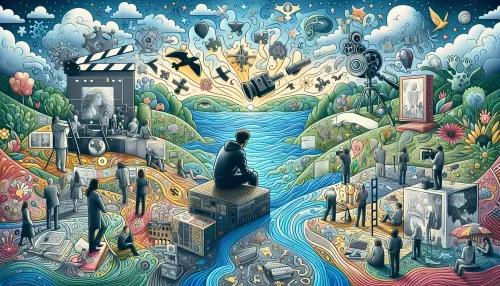
Portrayal of Autism in Hollywood: Impact on Public Perception and Understanding

A Closer Look at Depictions in Blockbuster Films
The portrayal of autism in Hollywood has been a topic of both celebration and criticism. As blockbuster films often shape public perception, it's crucial to analyze how autism is depicted in these major productions. While some movies have made strides in portraying autistic characters authentically, others have fallen into the trap of stereotypes and misinformation.
One notable film that garnered attention for its depiction of autism is "Rain Man," starring Tom Cruise and Dustin Hoffman. The movie received critical acclaim for bringing autism to the forefront of public consciousness. However, it also sparked debates about the accuracy of the characterization and whether it perpetuated certain myths about individuals on the autism spectrum.
On the positive side, more recent films such as "Temple Grandin" have offered nuanced portrayals of autistic individuals, shedding light on their unique talents and challenges. These depictions not only provide greater representation but also contribute to a better understanding of autism among audiences.
Analyzing the Evolution of Autistic Characters in Film and TV
The evolution of autistic characters in film and TV reflects society's changing attitudes toward autism. In the past, autistic characters were often portrayed as socially isolated savants with extraordinary abilities in specific domains. While these portrayals showcased the remarkable skills of some individuals on the spectrum, they also oversimplified the diverse experiences of people with autism.
In contrast, modern representations strive for authenticity and diversity. Shows like "Atypical" and "The Good Doctor" have made deliberate efforts to capture the multifaceted nature of autism. By depicting characters with varying interests, communication styles, and support needs, these narratives present a more holistic view of autism, resonating with audiences who have personal connections to the neurodiverse community.
Psychological and Emotional Impact on Viewers
The way autism is depicted in media doesn't just influence public perceptions it also has a profound psychological and emotional impact on viewers. When audiences encounter well-rounded, relatable autistic characters on screen, it can foster empathy and understanding. Conversely, inaccurate or stereotypical portrayals can reinforce misconceptions and hinder efforts to create an inclusive society.
Research indicates that media representations play a significant role in shaping attitudes toward marginalized groups. Therefore, it's essential for filmmakers and content creators to approach the portrayal of autism with sensitivity and authenticity. By consulting with individuals on the spectrum and incorporating their perspectives, storytellers can ensure that their narratives resonate with authenticity while challenging preconceived notions.
Real-World Effects on Autism Acceptance and Empathy
The real-world effects of media portrayals extend beyond entertainment consumption they permeate societal attitudes and behaviors toward autistic individuals. Positive and authentic representations can contribute to greater acceptance and inclusion in educational institutions, workplaces, and social settings. By humanizing autistic characters and showcasing their strengths and vulnerabilities, media has the power to foster empathy and dismantle stigmas associated with autism.
Conversely, negative or misinformed depictions can reinforce harmful stereotypes, leading to discrimination and exclusion. These portrayals not only affect how audiences perceive autism but also impact how autistic individuals navigate everyday interactions. As such, industry professionals bear a responsibility to prioritize accurate representation and advocate for meaningful inclusion both on screen and in real life.
In conclusion, the portrayal of autism in Hollywood carries significant weight in shaping public perception and understanding. As the industry continues to evolve, there is a growing opportunity to elevate authentic voices from the autism community and present layered, empathetic portrayals that resonate with audiences worldwide.
Check Out These Related Articles


Cinematic Narratives: Visual Storytelling as a Tool for Autistic Communication

Artistry and Expression: Female Visionaries Unveiling the Creative Potential of Autistic Children
